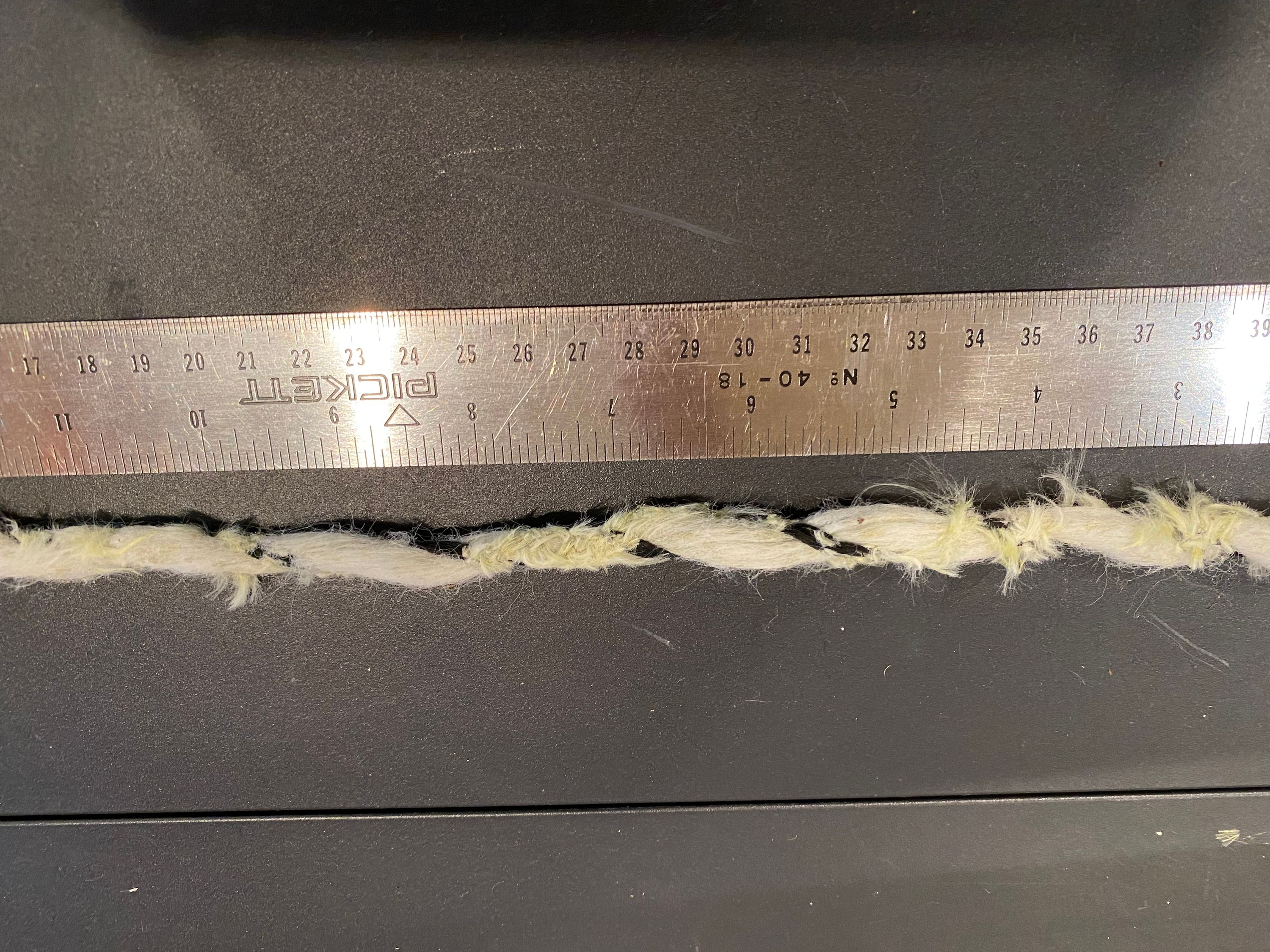Lessons from Antenna Hanging Part One - Rope Type
One of the lessons I learned from my recent maintenance effort on my main HF antenna (an 80m-6m OCFD) was that rope differences matter a great deal, and if you have any choice in the matter you will not just go to the Big Box Store of Hardware and buy any old random rope that seems suitable.
In the case of my HF antenna, the antenna was hung using rope purchased at Home Depot, literally at the last minute, and was what seemed reasonable among the choices when we were standing in the rope aisle. We knew next to nothing about rope and more or less chose what was a) in stock, and b) cheap, because we reasoned that rope is pretty much just rope and what difference could it make.
It turns out what we chose was very ill suited for the task, and it’s only by very good fortune that I decided to do some maintenance, discovered how badly it had fared in the elements, and replaced it before it failed.
Herewith, the many things I’ve learned about rope in the context of hanging amateur radio antennas on trees in general, and specifically in the climate of the Pacific Northwest of the United States.
I have used three varieties of rope for putting up antennas: polypropylene, 550 Paracord, and black Dacron.
Polypropylene
Polypropylene rope is common as dirt, available pretty much everywhere, and inexpensive ($0.11/ft on Amazon currently). It’s also very poorly suited for hanging antennas in every way. It stretches like crazy, even years after it is first put under tension, apparently without limit.
It has very poor resistance to UV radiation, so anywhere it is exposed sunlight, even indirectly, it will steadily break down. As it breaks down, the surface becomes sort of powdery, and this powdery surface makes an ideal environment for all sorts of algae, moss, mold, and fungi.
It has horrid abrasion resistance, so any spot where the rope rubs repeatedly over a branch, a bit of hardware, or even a pulley, the rope will degrade rapidly in that spot as the suspension shifts in the wind, rain, snow, and changes in temperature.

Finally, the surface texture of common twisted and braided polypropylene rope, along with it’s relative stiffness, makes it a lot harder to drag over branches and I’m guessing means the rope slowly saws through the branch it’s resting on with even minor movement.
550 Paracord and variants
I know a lot of hams are fond of 550 paracord for hanging antennas. In my experience it’s not ideal except for very temporary installations.
On the plus side, 550 paracord:
- has a sheathing that is relatively slick and drags over branches and through foliage with not much trouble.
- has sufficient tensile strength.
- comes in colors that make it easy to see even amongst foliage .
- is a fairly convenient diameter, not too large nor so small that it cuts your hands when you haul on it.
- is reasonably abrasion resistant.
- is inexpensive (currently about $0.13/ft on Amazon in reasonable lengths)
On the minus side, 550 paracord:
- is reasonably resistant to UV exposure but not impervious to other environmental issues like heat, cold, rain, and snow. Over time the surface degrades and becomes a host to various mosses, molds, and fungi (but not to the extreme extent that polypropylene does)
- gets quite stiff when outdoors for any length of time especially when cold.
- stretches, although not as badly as polypropylene rope, nor does it suffer from polypropylene’s infinite stretch problem.
Black Dacron rope
The black Dacron rope I like to use is this stuff.
It’s 3/16” braided, black Dacron rope.
It has a surface texture that is rough enough to hang on to but not so rough it’s hard to drag over a tree branch or be prone to snagging. It stretches, but not very much and once it’s been under tension for about a week, the stretching seems to stop. Of all the types of rope I’ve tried, this stuff is the most impervious to UV exposure, rain, snow, heat, cold, and the activities of and abuse by forest creatures.
And the best thing about it is it’s the cheapest of the options, at $0.09/ft on Amazon in 500 foot lengths.

